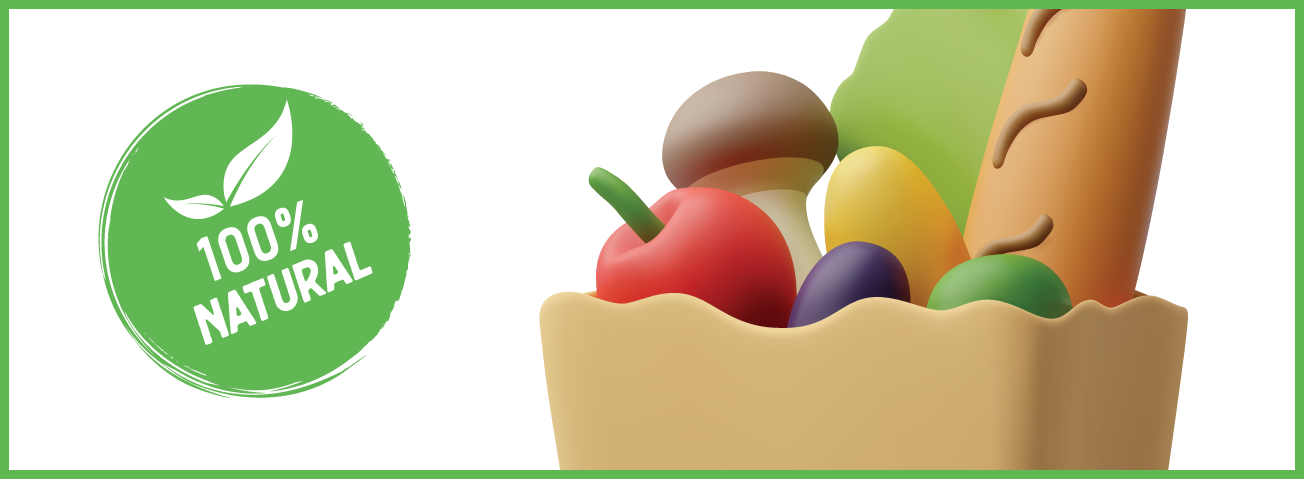
Prevalence of the “Natural” Label Varies by Food Category
- by Fred Kuchler and Megan Sweitzer
- 8/30/2023
U.S. food suppliers use packaging labels to make claims that highlight production-process attributes some consumers want, often charging a higher price for those products than for products without label claims. Some suppliers use the “natural” claim or similar labels such as “all natural,” “100 percent natural,” or “made with natural ingredients.” Regulatory agencies treat the “natural” claim as meaning nothing artificial was added during processing and the product was minimally processed, so food suppliers can use it at a relatively low cost. Regulatory agencies’ policies regarding the “natural” label do not address human health, the use of synthetic pesticides, genetically modified organisms, hormones, or antibiotics in crop and livestock production. The size and scope of the market for food carrying a “natural” claim had not been previously explored in depth as have other food labels such as chicken raised without antibiotics, USDA organic, seafood ecolabels, grass-feed beef, and many more including non-genetically engineered.
USDA, Economic Research Service recently released a report that examined the overall size of the market for food labeled “natural” in 2018, the latest available data at the time. Researchers documented the frequency with which suppliers used a “natural” label and how “natural” label use varied throughout the food supply. Estimates were based on Circana’s (formerly Information Resources, Inc. [IRI]) 2018 InfoScan retail scanner data and Label Insight data.
There are several ways to quantify the frequency of label use. Across all foods, those whose packaging labeled them as “natural” accounted for 16.3 percent of retail food expenditures, 16.9 percent of all items purchased (unit sales), and 11 percent of Universal Product Codes (barcodes, or UPCs) in stores in 2018. Total expenditures for foods labeled “natural” were larger than total spending for foods labeled USDA Organic.
“Natural” claims are not distributed uniformly across food categories. Dairy had the highest frequency of “natural” claims in 2018 with 27.7 percent of retail spending on dairy products for foods with “natural” labels. In addition, “natural” labels were on 32.3 percent of dairy unit items and 21.3 percent of UPCs in stores.
“Natural” labels were found predominantly on processed products and less so on fruits and vegetables, which usually meet the test of being minimally processed. Digging deeper into the food groupings shows where consumers are more likely to encounter the “natural” label. For example, products labeled “natural” made up 95.6 percent of retail spending on vitamins and supplements, compared with 0.5 percent of expenditures for potatoes. Vitamins and supplements are included in the “Other foods” category.
Numerous studies have concluded that most consumers do not understand differences in meanings of label claims. Many equate the “natural” label on food with healthier food choices and production practices that indicate environmental stewardship and attention to animal welfare. Misinterpretation of labels can cost both consumers and producers. For example, a consumer may pay extra for a product labeled “natural,” erroneously believing that the product offers a health benefit. The consumer does not receive the health benefit, and producers supplying the health benefit lose a sale.
The landscape of food label claims is complex for many reasons, but these data help reveal the relative size and scope of the market for foods labeled “natural” for informed decision-making and future research.
This article is drawn from:
- Kuchler, F., Sweitzer, M. & Chelius, C. (2023). The Prevalence of the “Natural” Claim on Food Product Packaging. U.S. Department of Agriculture, Economic Research Service. EB-35.
You may also like:
- Consumer Information and Labeling - Food Labeling. (n.d.). U.S. Department of Agriculture, Economic Research Service.
- Consumer Information and Labeling. (n.d.). U.S. Department of Agriculture, Economic Research Service.
- Kuchler, F., Greene, C., Bowman, M., Marshall, K.K., Bovay, J. & Lynch, L. (2017). Beyond Nutrition and Organic Labels—30 Years of Experience With Intervening in Food Labels. U.S. Department of Agriculture, Economic Research Service. ERR-239.


